-
Product Name
PrP antibody
- Documents
-
Description
PrP Rabbit Polyclonal antibody. Positive IP detected in mouse brain tissue. Positive WB detected in mouse brain tissue, human brain tissue, rat brain tissue. Positive FC detected in SH-SY5Y cells. Positive IHC detected in human gliomas tissue, human pancreas cancer tissue. Observed molecular weight by Western-blot: 30 kDa
-
Tested applications
ELISA, WB, IHC, IP, FC
-
Species reactivity
Human,Mouse,Rat; other species not tested.
-
Alternative names
ASCR antibody; CD230 antibody; CJD antibody; GSS antibody; Major prion protein antibody; prion antibody; prion protein antibody; PRIP antibody; PRNP antibody; PrP antibody; PrP27 30 antibody; PrP33 35C antibody; PrPc antibody
-
Isotype
Rabbit IgG
-
Preparation
This antibody was obtained by immunization of PrP recombinant protein (Accession Number: NM_000311). Purification method: Antigen affinity purified.
-
Clonality
Polyclonal
-
Formulation
PBS with 0.1% sodium azide and 50% glycerol pH 7.3.
-
Storage instructions
Store at -20℃. DO NOT ALIQUOT
-
Applications
Recommended Dilution:
WB: 1:500-1:5000
IP: 1:500-1:5000
IHC: 1:20-1:200
-
Validations
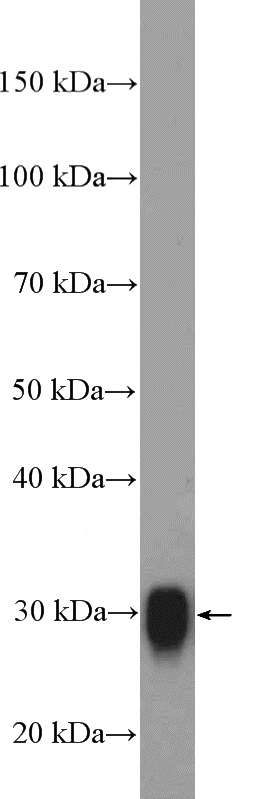
mouse brain tissue were subjected to SDS PAGE followed by western blot with Catalog No:114226(PrP Antibody) at dilution of 1:1000
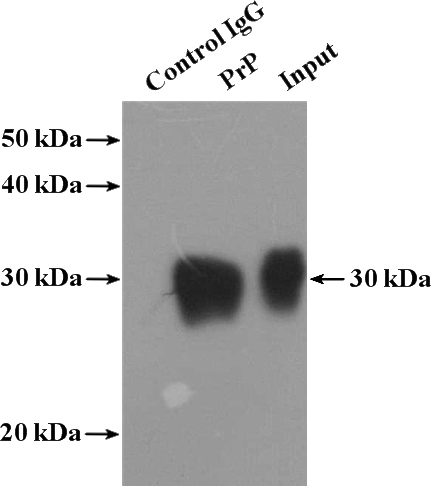
IP Result of anti-PrP (IP:Catalog No:114226, 4ug; Detection:Catalog No:114226 1:1000) with mouse brain tissue lysate 4000ug.
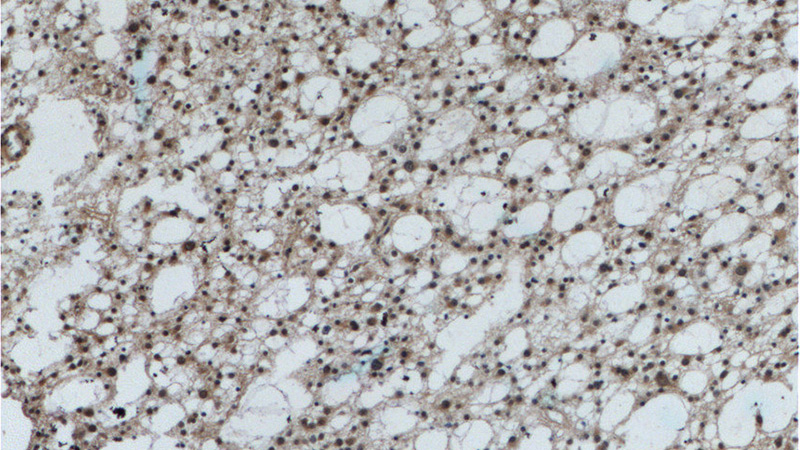
Immunohistochemistry of paraffin-embedded human gliomas tissue slide using Catalog No:114226(PrP Antibody) at dilution of 1:200 (under 10x lens)
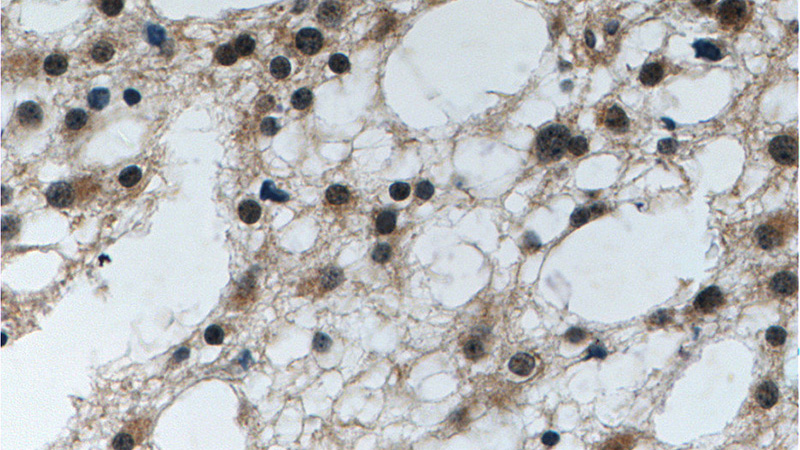
Immunohistochemistry of paraffin-embedded human gliomas tissue slide using Catalog No:114226(PrP Antibody) at dilution of 1:200 (under 40x lens)
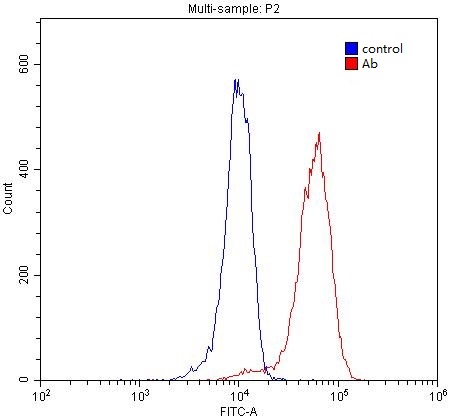
1X10^6 SH-SY5Y cells were stained with 0.2ug PrP antibody (Catalog No:114226, red) and control antibody (blue). Fixed with 4% PFA blocked with 3% BSA (30 min). Alexa Fluor 488-congugated AffiniPure Goat Anti-Rabbit IgG(H+L) with dilution 1:1500.
-
Background
Prion protein (PRNP) is a ubiquitous membrane glycoprotein whose abnormal self-replicating, misfolded form is widely believed to cause several central nervous system disorders, collectively known as Transmissible Spongiform Encephalopathies (TSE). Prion diseases are TSEs, attributed to conformational conversion of the cellular prion protein (PrPC) into an abnormal conformer that accumulates in the brain. The two isoforms, PrPC and PrPS, have the same primary amino acid sequence and only differ in conformation. While PrPC is composed of 42% α-helix and only 3% β-sheet, PrPSc is composed of 30% α-helix and 43% β-sheet. PrPC converts to its pathogenic isoform when the region corresponding to the residues 108-144 fold into β-sheets. PrPC is very soluble in detergents and easily digested by proteases while the PrPSc is insoluble in detergents and resistant to protease digestion. Prion diseases exist in infectious, sporadic, and genetic forms.
Related Products / Services
Please note: All products are "FOR RESEARCH USE ONLY AND ARE NOT INTENDED FOR DIAGNOSTIC OR THERAPEUTIC USE"
